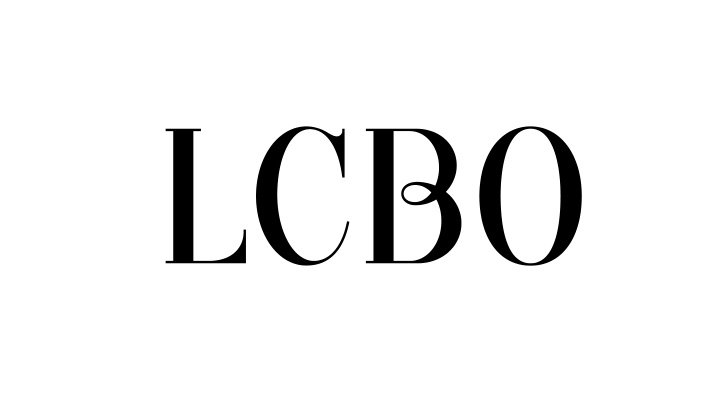



Quality Assurance Stephen Cater, Ph. D Director, Quality Assurance Trade Symposium May 27, 2016
QA Requirements Agenda Sensory Labelling Laboratory Testing Organic Update Packaging
Quality Assurance Requirements for Beverage Alcohol in Ontario
Why We Test LCBO: “importer of record is responsible for the quality and safety of the products it sells” FDA & Regulations of Canada
• Food & Drugs Act & Reg’s Legislation • Consumer Packaging and Labelling Act & Reg’s • Ontario Liquor License Act & Liquor Control Act
Corporate Social Responsibility
Role of LCBO QA Ensure products offered for sale are: • Of Sound Quality • Authentic and Safe to Consume • Compliant with Applicable Regulations
LCBO QA Quality Management System
LCBO CoAs
LCBO CoAs • Valid for one year from issue date • Cost is charged to supplier • Accepted internationally • Can be used to export Canadian products into other countries
Industry Advisor/ Affiliations • LCBO QA monitors and works with many regulators and industry groups to be aware of emerging issues • Helps determine chemicals that require testing and maximum allowable limits
Regulatory Partners • Police Services • Royal Canadian Mounted Police • Canadian Border Services Agency • Alcohol and Gaming Commission of Ontario
Sensory Evaluation
Sensory Method Score Final Score: 14.4 (20-point scale) Grading Categories Comments Characteristics & Attributes Excellent Very Good Satisfactory Unsatisfact. Good 5 Appearance & Colour Aroma & Correctness 6 Bouquet Intensity 7 11 Quality Taste Correctness 6 Intensity 7 72 Finish 5 15 Quality 10 Harmony
Sensory Results 20.0 Acceptable Sensory 13.0 13 Score Quality Unacceptable Sensory Quality Score & Reasons for Score Rejection Method Output
• Not a confirmation of sensory findings Laboratory • May determine presence of a “fault” Confirmation but not sensory acceptability • Sensory faults are usually the result of more than one chemical compound • The combination of compound, intensity and ratio makes the “fault” • Same compounds, same intensities and ratios may be sensorially acceptable in one wine but not in another
Sensory Evaluation Most issues screened at NISS stage Existing products- occasional quality issues such as sediment, sulphur
Labelling
• Bilingual- English/French • Common name (e.g. wine/vin) Label Review • Net quantity (e.g. 750 mL) Mandatory • Alcohol declaration (e.g. 13% Federal alc./vol.) Requirements • Country of origin (wines and brandies) • Dealer name and address (Eng or Fr) • Ingredient list (non-standardized) • Allergens and Claims
Steve’s 2013 Merlot Wine/vin 750 mL 13.5% alc./vol. Product of Canada/Produit du Canada contains sulphites/contient des sulfites Steve’s Winery, Toronto, ON
Labelling Process • NISS: electronic • Shipments: reviewed at warehouse and on lab bottle • Specialty Services: reviewed on lab bottle
Labelling Failures NISS: Supplier can correct prior to shipment Shipment: QA will resticker and charge back the supplier
Labelling • Bilingual Issues • Sulphite • Alcohol deviation • Organic • Net qty • Boxes
Laboratory Testing
What do we test? • All products offered for sale/imported by LCBO require testing. • LCBO: NISS, GP, Vintages • Specialty Services • Products of World- boutique, e-com • Grocery • E-Commerce
Alcohol Testing Product Tolerance Alcohol level is tested on all Spirit ± 0.3% products Beer ± 0.5% Actual alcohol must be within Fortified Wine ± 0.5% required tolerance Wine ± 1%
Contaminants Testing • Heavy metals- arsenic, lead, cadmium, cobalt, copper • Pesticide residues • Methanol • Ethyl carbamate (EC) • Illegal additives, e.g. isopropanol
Preservatives & Additives • Sulphites- free and total SO 2 • Sorbic acid • Synthetic dyes
Wine Properties Testing • Volatile Acidity • Total Reducing Sugars • Total Acidity • Sweetness Descriptor
• Caffeine in beverage alcohol Caffeine gives consumers false sense of physical and mental competence and decreased awareness of impairment • LCBO Limit: 30mg/serving • Several products have been reformulated to meet LCBO limits
Lab Failures % Lab Rejected 14 12 10 8 6 4 2 0 10-11 11-12 12-13 13-14 14-15 15-16
Breakdown of 2014-2015 Rejected Tests Tamper, 1.9% Sediment, 2.3% Bar Code, 2.6% Other, 3.0% Organic, 8.8% Label, 29.6% Chemical, 12.4% Allergen, 23.4% Alc Dev, 16.0%
Failed • New listings that fail chemical issue- Products not ordered • New products that fail chemical issue- not sold • Chemical failures of existing products may: • Recall of the product • Return to vendor • Destroy
Chemical Issues with Products • Ethyl Carbamate (fortified wines, bourbon) • Heavy metals (Copper, Arsenic, Lead) • Sulphites • Volatile acidity • Synthetic dyes
Organic Update
Organic • Must meet Canadian Organic Standard for 2009 and later • CFIA accepted equivalents • Must indicate “organic” along with certifying agency
Steve’s 2013 Merlot Wine/vin 750 mL 13.5% alc./vol. Product of Canada/Produit du Canada contains sulphites/contient des sulfites Steve’s Winery, Toronto, ON Certified Organic/Biologique by Len’s Organics.
Organic EU Organic Wine Standard- accepted by CFIA in April, 2016
Packaging Requirements
• Automated warehouses Packaging • Case weight max 18.9 kg • Carton Requirements • Material • Dimensions • Burst strength or ECT • SCCs • Floor loaded, no slip sheets or pallets • Pallets, 48” x 40”, high density wood
Pilot Program Imported specialty services loads Some loads from Italy being piloted as palletized loads for non-Durham warehouses
Pallets LCBO pallet specs issued Block and stringer pallets PECO now available as additional pallet source, along with CHEP
• Carton specs (vertically Issues with challenged) Products? • Wooden boxes wrapped in plastic Packaging • Case weight (18.9 kg max) • Lightweight glass (96% compliance rate) • Pallets (continental North America) • Anti-skid (continental North America)
Shrink Wrapped Trays Concern with compliance on many SKUs Letter to all agents issued Auto-debiting of warehoused inventory found leaking, e.g. cans
Vintages Release Carton Compliance 15% Compliant Non-compliant 85%
Vintages Release Cartons % Non-compliant Reasons 90 80 70 60 50 40 30 20 10 0 Carton SCC Markings Partitions
LCBO • In “Product Packaging Standards and Guidelines Guidelines for Chemical Analysis” • Based on Food and Drug Regulations and LCBO requirements • Posted on TRO: http://www.doingbusinesswithlcbo.co m/tro/Packaging- Quality/ProductPackagingStandards.s html
Questions? stephen.cater@lcbo.com
Thank you
Recommend
More recommend